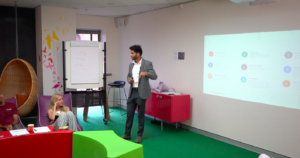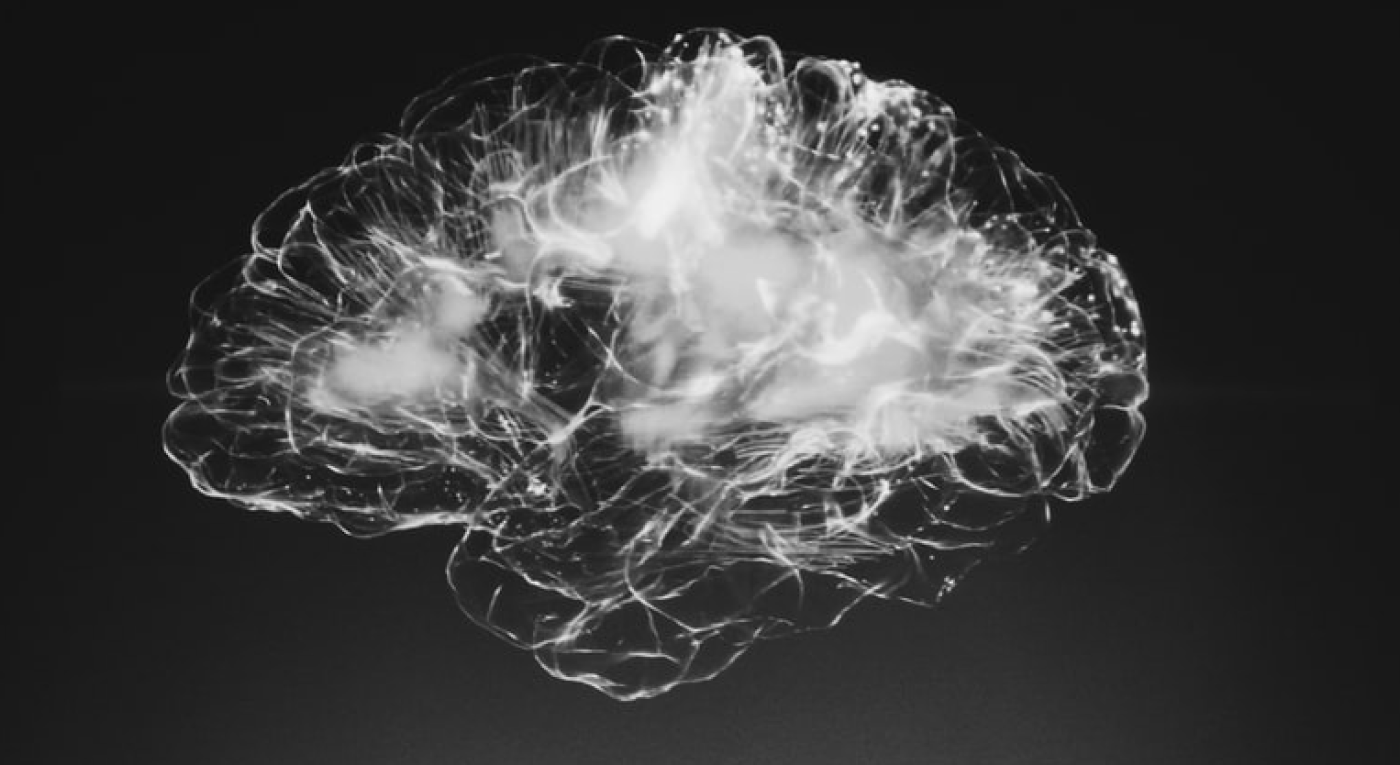These unconscious behaviours are making every attempt to remain unseen, putting up walls, and keeping people at arm’s length. To be clear — the unconscious is not made up of thought but dictates behaviours that happen automatically and these are behaviours you may not be aware of.
Let’s first have a look at some of the ways that we unconsciously deflect attention and prevent ourselves from being seen.
- Humour — when used as a remark to shift the spotlight and get away with bad behaviour.
- Sarcasm — as a way to dismissing saying what you actually feel.
- Intellectualism — in an attempt to cope with being the centre of attention.
- Perfectionism — to hide the shame of imperfections.
- Isolation — to appear needless and withdraw from social contracts as if you don’t need anything from anyone.

The list of unconscious behaviours is exhaustive and when people become aware of their unconscious behaviour, an incessant need to control thoughts arises, and reprogramming the unconscious seems like a good idea. In this video I’m not going to talk about how to reprogram the unconscious — this is what everyone talks about. What I am going to talk about is what the unconscious is, without the glorification and hype, and is it even possible to reprogram?
When I talk about the unconscious, I am specifically referring to ineffective patterns of behaviour that are unavailable to interception. I’m not referring to the medical emergency of being knocked out, alive but not breathing or in a coma.
I do not use unconscious and subconscious interchangeably — I will talk about the subconscious in the next video in the #buildyourbrain series and how this relates to autonomic functions of the nervous system.
The unconscious exists because the brain is a metabolically expansive structure. At rest, the brain uses 20% of your metabolic energy even though it only ways 2% of your body mass. This is 10 times more than any other organ in the body. Unlike feedback processing available to our conscious perception, the unconscious uses feedforward pathways and relies on context to estimate the best guess of reality.
This is clearly illustrated in how the unconscious pre-fills reality when processing an optical illusion, for example, the hourglass image.

Do you see an hourglass or two faces?
Even when you know there is an hourglass, you can’t un-see the illusion as the brain flips between the contradictions because processing faces is prioritized. This is why we may see faces in clouds or why as kids, we were afraid of shadows — we inherently fear what we don’t understand.
It is important to understand that the brain is doing it’s best to piece reality together — but doesn’t always get it right. In order to minimise uncertainty the brain manufactures psychological archetypes that offer the best chance of survival.
In a perfect world, the manufactured archetypes mature into a healthy ego which includes setting healthy boundaries, asking for their needs to be met in a clear and timely manner, and allowing people to help instead of pushing people away.
Because of the prolonged period of parental care, human children have the evolutionary benefit to be nuanced in their psychological development. However, this comes at a price, since we are not born with an accurate psychological road map and life always has other plans.
As children, we start building our own psychological roadmaps for survival. Since these roadmaps are unconscious, they are rarely evaluated and often go unchecked. The accumulation of childhood behavioural patterns internally manufactures a roadmap that later becomes our ego. However, as we have seen with the hourglass illusion, the brain being metabolically expansive, minimizes uncertainty by unconsciously attempting its best guess of reality, however, this perspective to cohesively stitch reality together may not necessarily match reality itself.
The Ego as we know it is a self-enhanced or self-deflating autobiographical deduction of the subjective importance we place on ourselves. Yet, despite what you might think, the anatomy of the ego is relatively easy to characterize. These archetypes can be deduced through brute force statistics such as NEO Five-Factor Innovatory (NEO-FFI) from which we derive the Big-5 personality types or through mystical approaches such as Enneagram. This is perhaps why we might not have met the same person but you will know someone like the people I’m about to describe.
For example, the caretaker who looks after others as a way to take attention away from their own needs, yet this gives raises considerable amounts of confusion as to the caretaker questions whether they will still be loved without their constant flattery. Or consider the idealist who has figured out that the only logical solution to having their needs met is to abandon their needs altogether. And so beings the self-fulfilling prophecy of what they want the most always be slightly out of reach. Because it makes it near impossible to receive since this contradicts their deeply held belief.
If you would like to learn more about the unconscious patterns, you can research the personality types or jump onto my Train Your Nervous System Online Course where I share my thoughts on the Enneagram personality types and the type of childhood patterns that are responsible for fabricating them.

Now, when it comes to rectifying ineffective behavioural patterns, we must first consider whether we are simply manufacturing another ego type or addressing the underlying unconscious infrastructure?
There are two things that are inherently wrong with working with the ego:
- When you invent a desired ego in an attempt to hide your mistakes, shame and imperfections, you reinforce the belief that you are unloveable as you are.
- It is not healthy to keep things smooth and under control — this is just a psychological protective mechanism to avoid anything that conflicts with a deeply held false belief.
The problem with reprogramming the unconscious mind, using big words like — reticular activating system, the law of attraction, and so on is that it is subjecting the unconscious to see a certain way — essentially fabricating a new ego. Yet we don’t actually know what is right, what is wrong, what is an illusion, or what is real. So to condition the unconscious makes absolutely no sense. This is perhaps why in ancient scriptures, the ego is simply referred to as an illusion.
Regardless of what self-image you create, beneath the surface, inaccessible to our conscious perception the Unconscious holds you back. If you are being inundated with exhaustive strategies and trying everything under the sun, maybe this is the reason it is not working.
The solution then is what no one wants to talk about — the complete and utter desolation of self. This is where psychology falls short since psychology is fundamentally rooted in characteristics and the lack thereof, renders the science meaningless beyond this point.
To grasp how deeply invested the brain is in reconstructing reality, let’s do an experiment. Become comfortable and take notice of where you are while you are right now. Perhaps it’s a room? Have a look at the objects around you. Now, instead of seeing objects, simply observe empty space between the objects? What happens when you observe space itself? How does this change your perception? What do you see when your attention is freed from the traps of the visible? Does the environment around you become more vivid? Do you feel like a vail has been lifted off the mind? Do you find that beauty is no longer hidden from your eyes but all around you?
How does this perception shift your relationship with rejection, abandonment, loneliness, and shame? If you find yourself in a moment of crisis, trying to navigate your mind — ask yourself, what version of you have you created that has put you in this position? Have you been trying to create the best version of yourself? Is this psychological roadmap effective? Are you frustrated with using an inaccurate roadmap? Is your only alternative: to try harder at doing what doesn’t work?
Monks, yogis, and gatekeepers of ancient wisdom have devoted countless hours to find rest in this natural great peace. This is what prolonged periods of meditation lead to. Yet, this stillness we seek in life does not exist. As I mentioned before — it is not healthy to keep things smooth and under control, this is simply another protective mechanism. Take a monk out of a monastery, isolated from their spiritual nursery and ask them to work like everyone else, fall in love and pay rent — does the stillness still remain?
I had the great fortune of experiencing the complete desolation of self, accidentally in a near-death experience at the age of 23. I share a full recollection in a dedicated video linked here. If you end up watching the video — you’d realize that I would not wish that experience on anyone, yet I dedicated my entire life to get a glimpse of it once again. No meditation, sacred ritual, or psychotropic experience came remotely close. Despite what I tried, I was never able to return to what I had experienced before until I realized that it never left me in the first place. I spent nearly two decades researching academically, I think the very nature of a neuroscientist, or any scientist for that matter is to look for evidence or reconsider everything I’ve been led to believe. I’ve checked and cross-checked and time and time again there is only one conclusion I keep returning back to Love.

Doesn’t matter which way you look at it — if you struggle to look people in the eye, it is not anyone else that is making you uncomfortable — you are the person who has to have a hard look at yourself. The same is true, if you find yourself pushing away the person you love the most, there are unconscious patterns of rejection, abandonment, loneliness, and shame keeping you from being seen and preventing you from receiving what you want the most, which is ultimate — Love.





